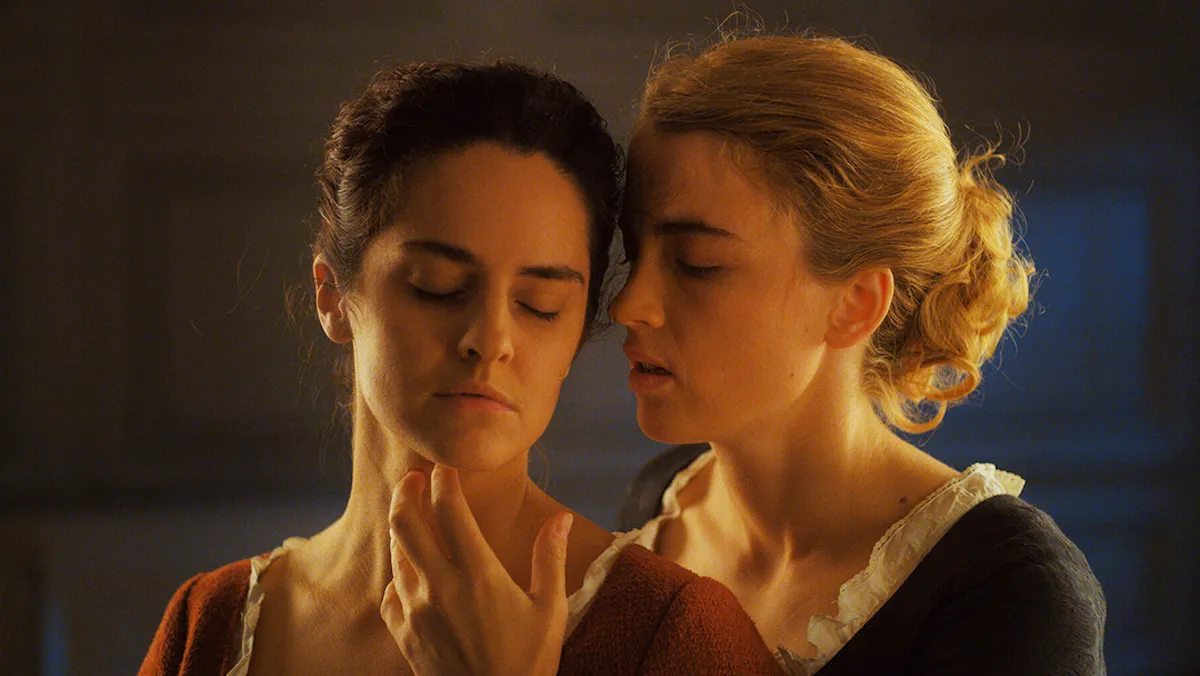**SPOILER WARNING: This article discusses various plot details of Portrait of a Lady on Fire.**
Portrait of a Lady on Fire, the French festival sensation, has been winning awards and generating massive buzz since its debut at Cannes last summer but only started to roll out in wide release here in the U.S. a few weeks ago. For those of us who had to wait for it to come to a multiplex, that wait was worth it.
Portrait of a Lady on Fire explores the permanence of art and the fleeting nature of love, but it also, to my pleasant surprise, touches on elements of female mysticism and magic that were completely unexpected but perfect for the story. But in a tale about the hidden lives of women, about connection and love that exists in the quiet, unnoticed rooms and distant places the patriarchy isn’t concerned with, the presence of a little bit of witchcraft shouldn’t be surprising at all.
There are many types of magic in Portrait. The easiest to identify is, of course, the magic of art itself. The ability of a portrait or a piece of music to preserve the idea of someone, to make time stand still–that’s magic. The use of the myth of Orpheus and Eurydice throughout only emphasizes this, with the conceit that Orpheus chose the memory of his beloved over actually bringing her back to life. He makes, as Marianne (Noémie Merlant) says, “the poet’s choice” to keep a memory rather than reality.
But sometimes the poet’s choice is all that is available to women, the film seems to tell us—especially in a time when it was common and unavoidable for a woman like Héloïse (Adèle Haenel) to be married off to a man they never met, and the only way to escape that was pretty much … death, which is what Héloïse’s sister chose.
Women like Marianne and Héloïse, along with Sophie (Luàna Bajrami), the maid that becomes their friend and equal for a short time, must find connection and freedom in liminal spaces, in the impermanent. They do not occupy the main rooms of the home, but the unused ones and the hidden, like the kitchen. They connect over the music of Vivaldi and the secret songs of common women.
The most mystical scene in the film, the one with the witchiest vibes for sure, is when Marianne, Héloïse, and Sophie join a group of local women around a bonfire after they have spent a day trying to help Sophie end an unwanted pregnancy. They’ve already gathered herbs and brewed them, but now they have to seek out other help.
The women around the fire almost spontaneously begin a chant, adding layers of voices and power to a Latin song based on the music of the era but composed by electronic artist Para One for the film. It’s not witches dancing naked under the full Moon, but it’s just as magical. It’s a gathering secret from the world of men where women share space and power and song, and it’s there that Héloïse literally becomes a woman on fire, finding a quiet strength.
This music is so magical to me. From the rising swell of the women tuning to the Latin chant of “No possum fuggere,” which means “I cannot flee,” there is an urgency and beauty to it. It’s otherworldly—if your world is the typical day-to-day in the patriarchy. The coda, which is almost liturgical and uses the words “Nos resurgemus” (“we rise), completes the story: Women cannot escape their lives, but they can find places to fly and rise in secret moments.
Following, there’s yet more exploration of the hidden world of women, and yes, witches. Sophie seeks out a local wise woman—probably a midwife. She uses herbs and her knowledge to end Sophie’s pregnancy, and this would have been common. Wise women, midwives, herbalists, hedgewitches—they all worked on the fringes, forgotten and often persecuted by men, but they were there for other women when the need arose.
This secret moment—of women and abortion, herbs and shadows—is the kind of thing history and the world of men often forgets, but Héloïse prompts Marianne to paint it so that a small fraction of this secret world might be remembered.
Marianne and Héloïse experience a different side of magic when they sample a topical herbal concoction that Héloïse has been told will make them “fly.” This is a “flying ointment,” a mix of herbs and hallucinogens that wise women and witches applied to their skin to give then the sense of flying—though it was more of a spiritual quest. This is where the idea of witches flying on broomsticks came from.
Marianne and Héloïse find love for only a brief time. It is elevated by magic and music, but it is still fleeting; all that remains is art and memory, but there is an understanding that this must be enough for them. Like so many women throughout history, they must find moments of reprieve in an unfair world. Through magic, through art, through connection, and through love, they can briefly burn and fly.
Want more stories like this? Become a subscriber and support the site!
—The Mary Sue has a strict comment policy that forbids, but is not limited to, personal insults toward anyone, hate speech, and trolling.—









Published: Mar 2, 2020 01:36 pm